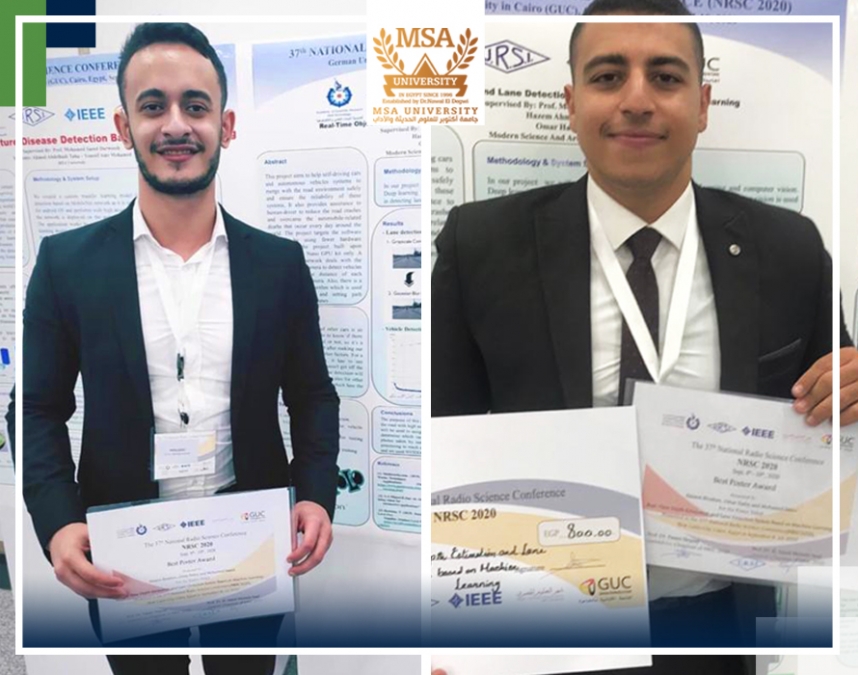The students from faculty of engineering, Hazem Ibrahim and Omar Fathy, have won the best graduation research paper award under the supervision of Dr.Mohamed Saied in the Radio Science annual conference - round 27, which is considered as one of the biggest and oldest conferences that are held annually in Egypt.
The conference was under the sponsorship of the International Union of Radio Science (URSI), and it has tackled many great subjects such as:
• Insulators and nanostructures in antennas.
• Wired networks and medical communications.
• Nuclear spectroscopy and processing the antennas for modern communication systems.
In the conference, the researchers have submitted 90 papers, and only 39 have been accepted. Moreover, the conference has presented many general lectures, and also has given a financial prize for the best project, which will be published on “IEEE Explorer”. In addition, the conference has provided the students with the perfect environment to enhance their creativity, and their participation in scientific meetings.
Our students ‘project is titled as “Real-Time Object and Lane Detection System Based on Machine Learning”.
This project aims to help the driver and autonomous vehicles systems to merge with the road environment safely and ensure the reliability of these systems; it also provides assistance to human-driver to reduce the road crashes and overcame the automobile-related deaths that occur every day around the world.
The project targets the software approach by using fewer hardware sensors, so the project built upon NVIDIA Jetson Nano GPU kit. A deep learning network deals with the frames from the camera to detect cars. Another computer vision algorithm parallel with deep learning provides information about road lanes and the path equation to make sure that the vehicle stays oriented.
After deep learning network finishes its work, there is a computer vision algorithm whose responsibility is to determine at which lane each detected car is moving and what is the relative speed of these cars, also classifies the cars according to the danger level represented by each car.
The proposed system was built to help drivers by makes early warning if there is any expected danger, and provides the actions needed e.g. (steering and speed) to keep the car moving in the standard safe mode, so our end-challenge is to combine these algorithms with deep learning network in a real-time reliable system.

